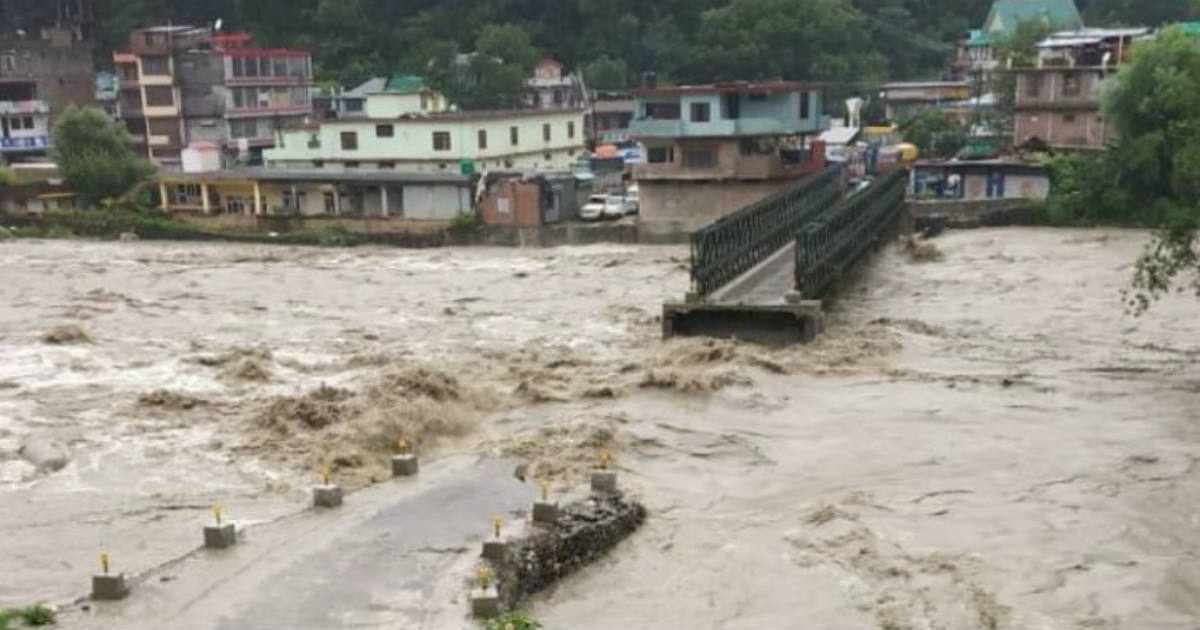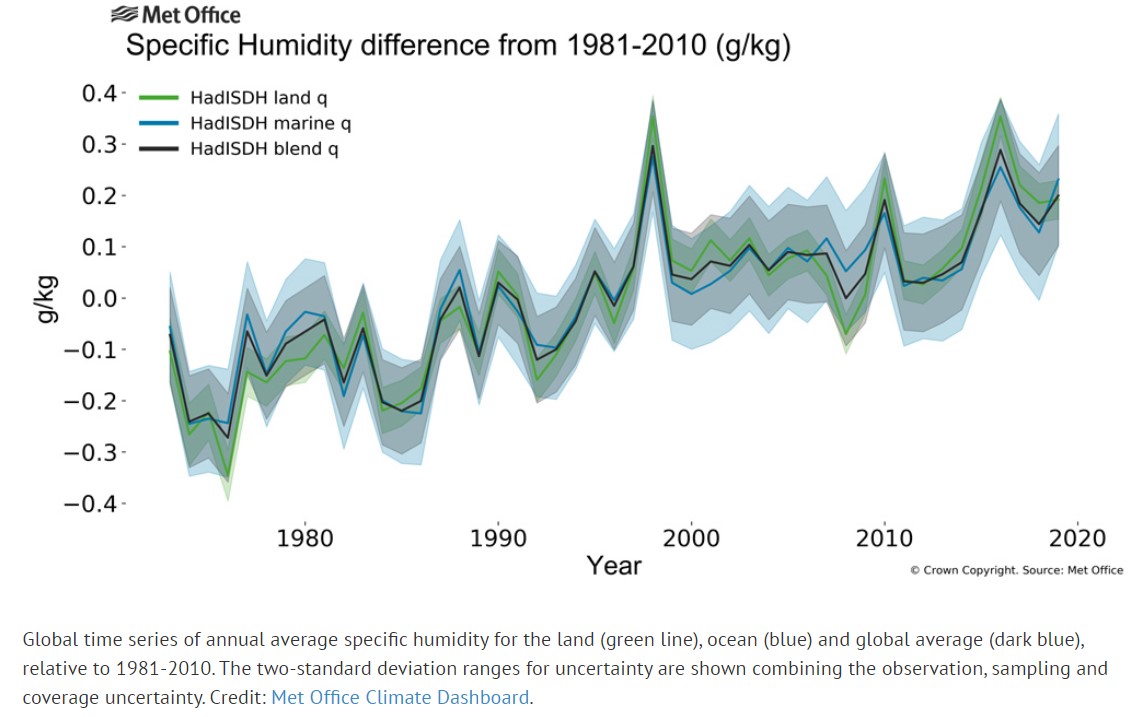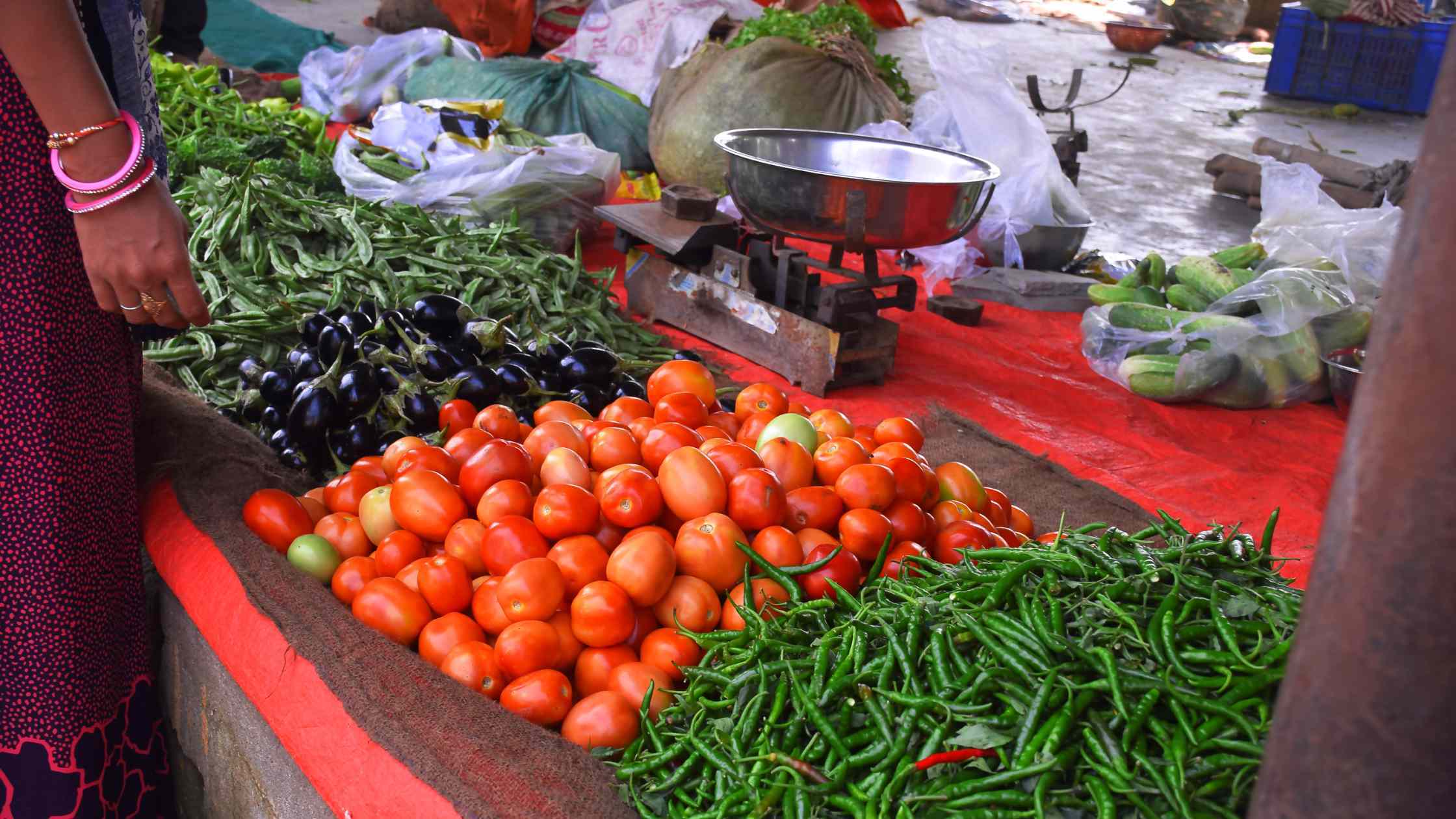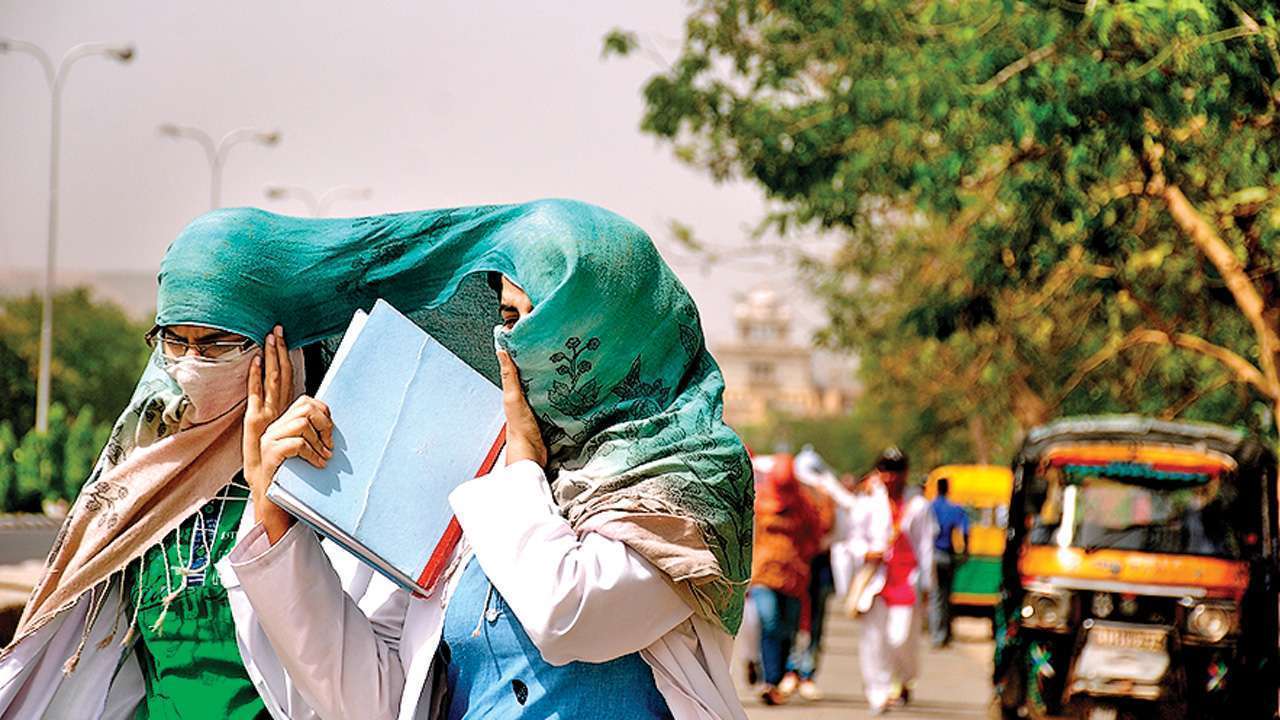Climate change fuelling India's monsoon fury
Uneven and extreme rainfall this monsoon, especially in Uttarakhand and Himachal Pradesh, has a strong link to climate change, which is altering humidity and temperature pattern
By Editorial Team / Aug 23, 2023

Photo credit: Skymet Weather
This monsoon season, torrential rain hit the Indian Himalayas repeatedly with flash floods and landslides, causing millions of rupees worth of damage and killing several people across Himachal Pradesh and Uttarakhand. Several rivers are in spate and have been running above the danger mark, sweeping away bridges, homes, and cars, causing widespread devastation across the hilly terrain.
According to experts, weather conditions might have been favourable for heavy rains, but climate change has a definite role in the increasing intensity.
“This is a typical pattern during the monsoon season every year. At present, the country is witnessing break-monsoon conditions. During this time, the axis of the monsoon trough shifts northwards and stays stationed over the Himalayas triggering heavy to very heavy rains over the hilly region. However, a warming atmosphere has increased the intensity of rain tremendously. More warming means more energy in the environment, leading to more rain. Moisture availability is abundant in the atmosphere, which causes incidents like torrential rainfall in a short period causing damage like what we saw in Himachal and Uttarakhand this season,” said Mahesh Palawat, vice president, Meteorology and Climate Change, Skymet Weather.
During break-monsoon conditions, most monsoon rainfall activities get focussed over Himalayan foothills and to an extent over Himachal Pradesh and Uttarakhand. At the same time, other parts of the country, like Central India, witness dry weather conditions. This is not new and has been happening ever since the existence of monsoon. However, things take a turn when climate change comes into the picture.
“The science of global warming is clear that if we continue to emit more and more greenhouse gases into the atmosphere, especially CO2, it will enhance the air’s capacity to hold more and more water. Now, whenever favourable weather conditions appear, for example, in the case of break monsoon conditions, the air will release much more water vapour in the form of rainfall. This means the probability of an ordinary rainfall event intensifying into a heavy or extremely heavy one will increase because of global warming,” said Akshay Deoras, meteorologist and research scientist, National Centre for Atmospheric Science and Department of Meteorology, University of Reading, United Kingdom.
Increasing humidity, changing monsoon patterns
The atmosphere, land and oceans are all warming at a faster rate. The warmer it becomes, the more moisture the atmosphere can hold. This has led to more water being evaporated from the Earth’s surface. This increases the holding capacity of the air, which results in more droplets and heavier rainfall, sometimes in a shorter space of time and over a smaller area.

There has been an increase in the average relative humidity across India because of the rapid rise in land and sea temperatures. According to the Clausius-Clapeyron equation, the air can generally hold around 7% more moisture for every 1°C temperature rise. Therefore, for relative humidity to stay the same under 1°C of warming, the moisture content in the air also needs to increase by 7%. In theory, if there are no limiting factors, then this is the rate of increase we expect.
Experts say humidity is the prime factor behind the increasing likelihood of heavier rainfall and even more dangerous heat waves. Both humidity and temperature are the twin pillars of climate change.
Now, changing monsoon patterns. There has been a change in the western disturbance (WD) trajectory of late. WDs are more prevalent during winter when they travel in lower latitudes, bringing rain and snow over North India. During the summer, these systems tend to travel in higher latitudes and do not have much impact on the region during the ongoing season. However, active WDs have travelled across the Himalayas during the monsoon season.
A very strong western disturbance interacted with the monsoon enhancing the influx of moisture, rainfall and floods. Experts said that this interaction of two different weather systems led to the record-breaking rains across Himachal Pradesh and Uttarakhand this July.
“Western disturbances are more active during winter but are now more active during the monsoon season. This was the reason behind the consecutive floods in Uttarakhand and Himachal Pradesh this season. Floods are clearly because of weather conditions, but if you look at an individual event, for instance, Rishikesh got over 400 mm of rain in a day, which happened twice this month, so events like this could be because of global warming. Global warming could have intensified them, but how much could only be ascertained through attribution studies,” explained Deoras.
According to a recent study, the Hindu Kush Himalayas (HKH) cryosphere (glaciers, snow, permafrost) is undergoing unprecedented and largely irreversible changes over human timescales, primarily driven by climate change. The impacts are becoming increasingly clear, with increased warming at higher elevations, the accelerated melting of glaciers, increasing permafrost thaw, declining snow cover, and more erratic snowfall patterns. The “water towers” of the HKH, critical for downstream regions, are some of the most vulnerable to these changes in the world.
According to the IPCC’s 6th Assessment Cycle Report, warming in the Himalayas has increased with altitude. Such elevation-dependent warming could lead to faster changes in the snowline, the glacier altitude and the snow/rain transition height (high confidence). This means the quantum of weather activities would undergo significant changes.
The issue of land subsidence
There has been a steep rise in land subsidence incidents during the last couple of years. Given the Himalayas’ fragile ecology, scientists have warned about these incidents for a long time. Joshimath land subsidence has brought the issue to the forefront. Simultaneously, Raini Village, home to India’s most famous forest conservation movement ‘Chipko Aandolan’ has also been declared unfit for human habitat due to increasing cracks across the village. Uttarakhand has become a perfect example of a Himalayan case study of climate change, fragile ecosystem, unplanned development, and combined consequences.
A ground penetrating radar survey confirmed that the roads are unstable, particularly in those spots where the road is either lying over mudstone beds or over thick non-cohesive sandy soil. The infiltration rate of water in this sandy soil is generally rapid, which allows a fast flow of water into the deeper horizons. Thus cracks can be seen in roads caused by vertical settlement.
Similar results are observed in slope stability analysis, where the slope covered with sandy soil exhibits a safety factor of less than 1.0. However, the factor of safety is close to 1, where the slopes consist of alternate beds of sandstone and mudstone.
“The Shivalik range is the youngest and most fragile part of the Himalayas as they are made up of debris. Rocks are made up of sandstone and shale rock, which is the weakest form of any rock, and they cannot withstand heavy rains as their composition is of clay minerals. The increasing torrential rainfall, deforestation, and unchecked construction have increased the chances of erosion. As humans, we have been challenging these mountains’ capacity for many years now. Increasing anthropogenic stress will only lead to disaster,” said Y P Sundriyal, head, department of Geology, HNB Garhwal University, Srinagar, Uttarakhand.
Need for speed: immediate and effective climate action
The tragic loss of lives and devastation caused by the recent landslides and flash floods in Himachal Pradesh serves as a stark reminder of the intensifying impact of climate change on vulnerable regions. Vulnerable mountain communities are already experiencing significant adverse impacts like loss and damage to lives, property, heritage, and infrastructure.
Floods and landslides are projected to increase, and the effects on fragile mountain habitats are particularly acute. Monsoon rainfall patterns over India have seen a climatic shift in recent decades. The most significant change is that moderate rains spread out through the monsoon season are being replaced by long dry periods intermittently with short spells of heavy rains.
“We saw this pattern manifesting during the current year also. Even though the all-India average rainfall is near normal, the regional rainfall during the season has had deficits and floods. The pace of global warming is now accelerated, and we need urgent action as these extreme conditions will intensify in the near future. Climate action and adaptation at local (panchayat) levels should go parallel with mitigation at global and national levels. I am concerned that there is less focus on local adaptation. Instead of waiting for weather forecasts yearly, we need to disaster-proof locally, based on sub-district wise assessment,” said Dr Roxy Mathew Koll, senior scientist at the Indian Institute of Tropical Meteorology, Pune.
“Efforts to mitigate the impacts of climate change, including strengthening infrastructure, enhancing disaster preparedness, and promoting sustainable land management practices, must be prioritised. Furthermore, international collaboration to curb greenhouse gas emissions is critical to slowing down the trajectory of these catastrophic events. This sobering situation also highlights the interconnectedness of climate change impacts across regions. With neighbouring Uttarakhand facing similar challenges this monsoon season, the need for a comprehensive and unified approach to address climate-related emergencies becomes evident. It is a collective responsibility to combat climate change and protect the lives and livelihoods of those at risk,” said Anjal Prakash, clinical associate professor (research) and research director, Bharti Institute of Public Policy, Indian School of Business, and IPCC author.
Climate change may also affect tourism and mountaineering significantly. The intensity and frequency of disasters and hazards like avalanches, landslides, debris flow, flooding, and GLOFs may negatively impact both access and destinations.


